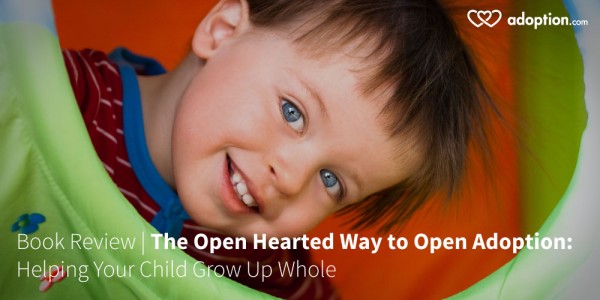
If you have been involved in an open adoption, whether as an adult adoptee, a birth parent, or an adoptive parent, this book is a must-read for you. It discusses open adoption from those three viewpoints as well as the “why” of open adoption.
In the book, Lori, an adoptive mother, and Crystal, a birth mom, both share their personal experiences regarding open adoption. The book is split into two sections, with the first section discussing what open adoption is from the adoptive parent’s and birth parent’s viewpoints, tips for choosing an ethical adoption professional, and a description of the pros and pitfalls of open adoption. The second section discusses open adoption from the child’s perspective.
In the first half of the book, the overarching views of open adoption and appropriate wording/terms are covered. “Adoptive mom,” “first mom,” and “birth mom” are all appropriate terms. Then it discusses what “success” might look like; while that may be look different for different families, a constant measure of success is when the child is happy. “Success might mean setting boundaries out of love, rather than out of fear or security.” It discusses how important communication is for the adoptee, sharing both the good and bad. “Open adoption is a process, not a point in time. It is a direction you aim for. And you periodically check to see if you are still on the desired path.”
The book also discusses the life stages and the different concerns each involved person might face throughout the adoption. Adoptive parents might experience feelings of guilt, frustration over birth parents not respecting their boundaries, or worries about birth parents who have pulled away. The advice in these situations is to be aware of yourself and your own feelings because you can only change yourself and not others. For adoptees, people might think they will experience confusion with birth parents and adoptive parents involved. The book states that it is usually the adults who are confused. Letting children use the words they choose to address family is beneficial for them, and you will learn what they are truly thinking.
Towards the end of the book, birth parent fears are discussed, with the number one fear being that the openness with close some day. However, most of the time this does not happen. The book discusses ways for birth parents to ask for more openness. It also discusses how to write a letter to an absent parent.
“Adoption creates a split in a person between his biology and biography. Openness in adoption is a great way to heal that split.”

About the Author: Lori Holden writes from Denver at LavenderLuz.com. Her book, The Open-Hearted Way to Open Adoption: Helping Your Child Grow Up Whole, written with her daughter’s birth mom, is available in hardcover and e-book through Amazon or your favorite online bookseller.

